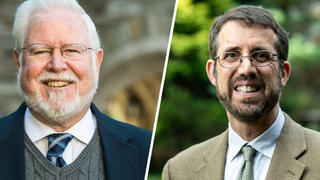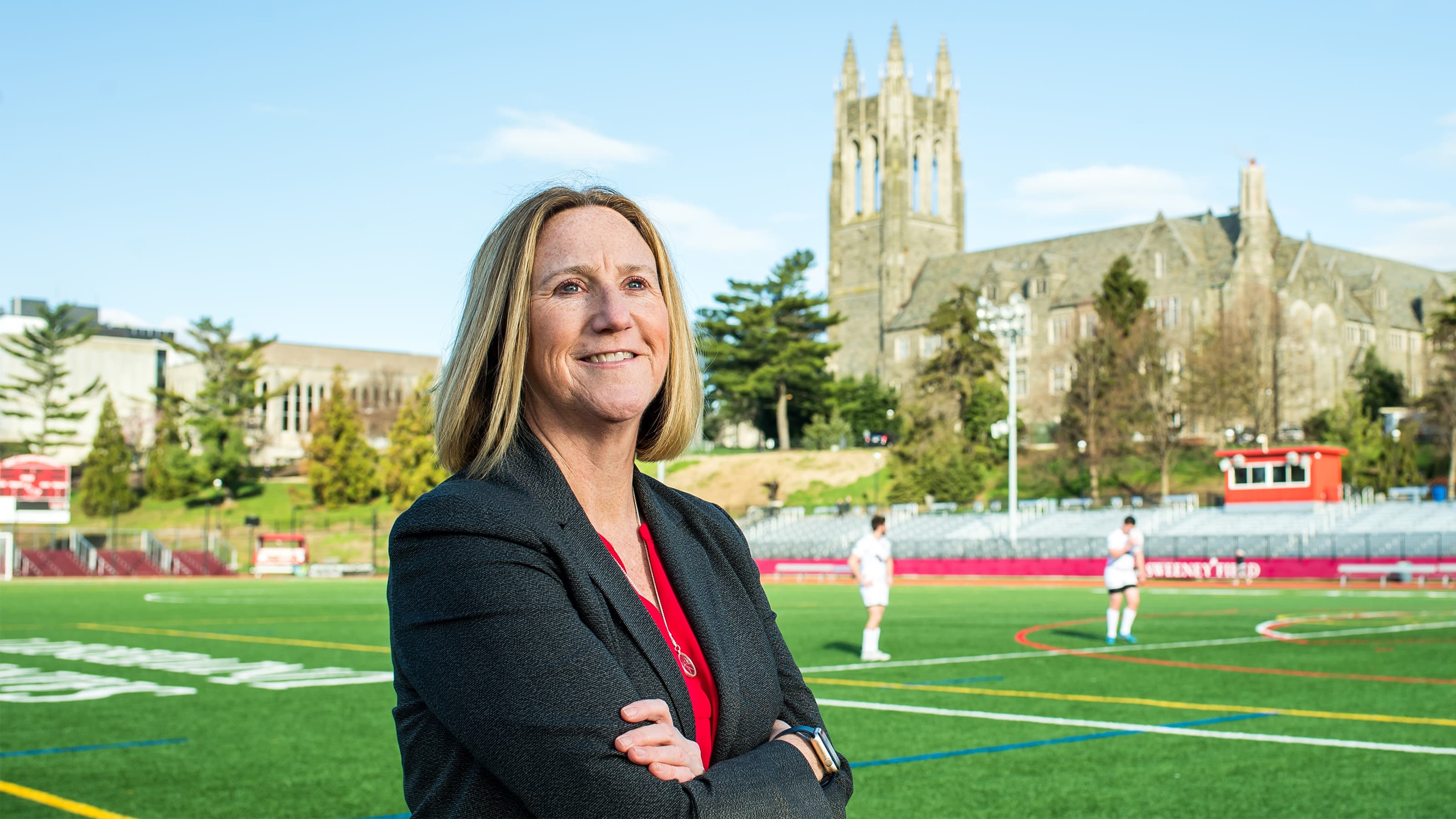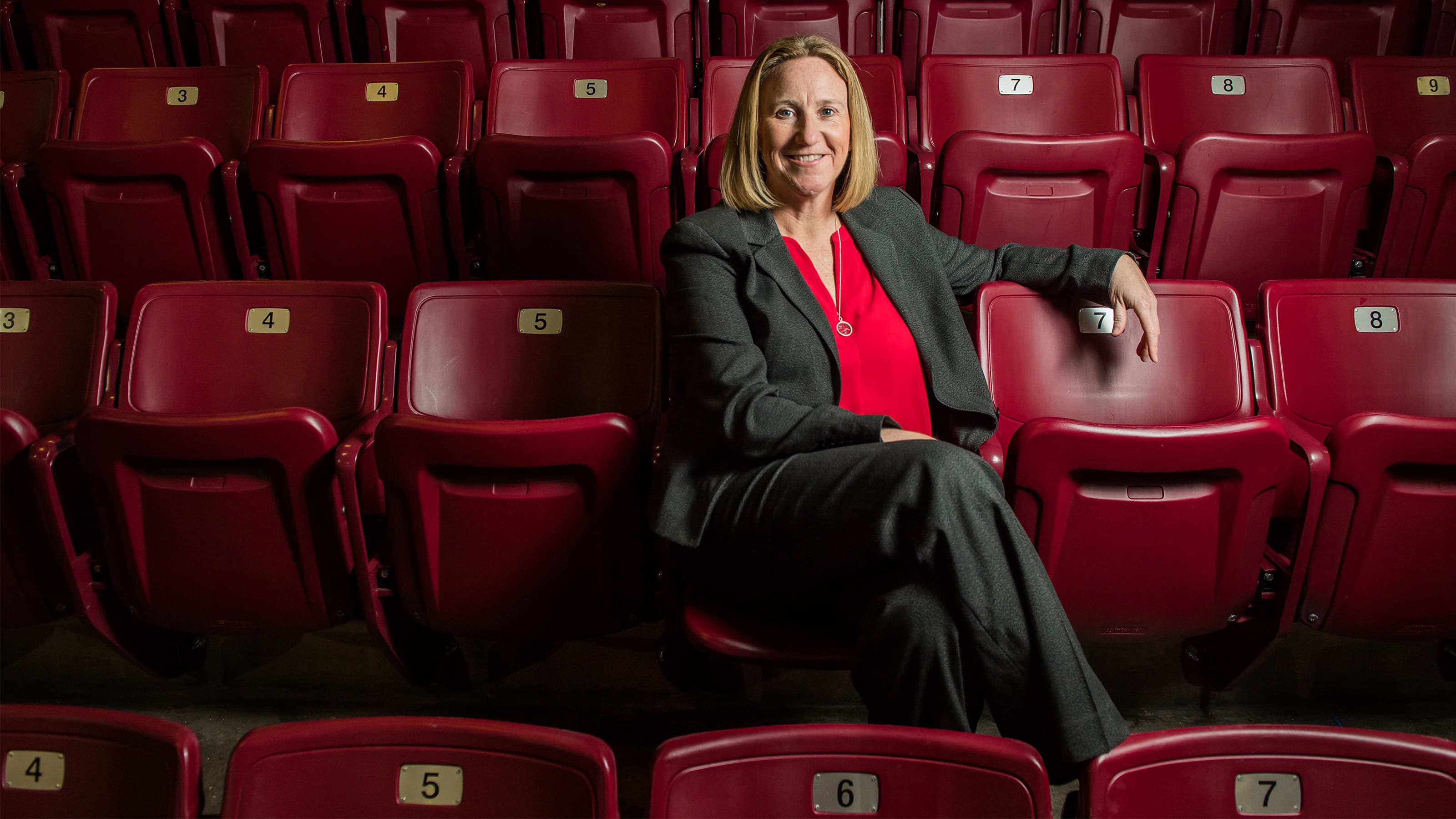New Book Serves as Resource for Productive Dialogues About Israel
Philip Cunningham, Ph.D., and Adam Gregerman, Ph.D., have contributed to a resource book to help religious groups hold dialogues about the Israeli-Palestinian conflict – a topic that often evokes strong emotional reactions.
 Philip Cunningham, Ph.D., and Adam Gregerman, Ph.D.
Philip Cunningham, Ph.D., and Adam Gregerman, Ph.D.
- The International Council for Christians and Jews sponsored a research project to find ways to allow for civil discussions about the Israeli-Palestinian conflict – a subject that often leads to passionate opinions and friction between dialogue groups.
- This project led to the creation of a resource book, which can be used as a practical guide for discussion groups who want to have rational, informed conversations about the topic.
- The book contains essays from religious scholars and historians with differing backgrounds and views, and also contains a curriculum for dialogue groups to use to enable productive conversations.
Beginning in 2011, Philip Cunningham, Ph.D., professor of theology, later joined by Adam Gregerman, Ph.D., associate professor of Jewish studies – both directors of the Institute for Jewish-Catholic Relations – embarked on a six-year research project. The goal of their research, sponsored by the International Council of Christians and Jews (ICCJ), was to create a resource that would help interreligious discussion groups have educated, informed conversations about the land and State of Israel. This research project resulted in a new book, “Enabling Dialogue about the Land: A Resource Book for Jews and Christians,” co-edited by Cunningham with Rabbi Ruth Langer, Ph.D., and Rev. Jesper Svartvik, Th.D. The book includes a discussion curriculum that was largely assembled by Gregerman, as well as research and essays from a team of international religious scholars and historians.
While it does not intend to “solve” the Israeli-Palestinian conflict, the book encourages interreligious conversations that promote understanding and avoid becoming endless arguments. We spoke with Cunningham and Gregerman about the conception and purpose of this book, and the importance of its lessons today.
1. How did this project come about?
Cunningham: The topic of Israel is a difficult one, even among Christian and Jewish communities who encourage and promote mutual understandings and dialogues. In the Christian tradition, we don’t have any spiritual connection to a particular piece of land. The Vatican is important for Catholics, but it doesn’t compare to the significance the land of Israel has in terms of culture and ancestry in Jewish tradition. In Jewish liturgy, there’s a longing to return to Israel. Christians can’t compare that to anything in our own traditions, so it’s hard to connect with the Jewish experience. Add politics on top of that, and it multiplies the difficulty. When dialogue groups run into a wall on this topic, the ICCJ is one place to turn to.
Gregerman: This particular project started in 2011. At the time, the ICCJ board members were receiving questions such as: “What do we do when intense disagreements arise between Jews and Christians over this topic?” Our own University’s Institute for Jewish Catholic Relations tried to address this issue by bringing some scholars to the University in 2011 to discuss how to deal with the issue of dialogue groups breaking down over this topic. This led to the formation of a research team.
Cunningham: Adam was part of that research team even before he came to St. Joe’s. The team met annually for six years and worked on a curriculum. We realized we had to give people information about the Bible and the history of the State of Israel. We had people share their experiences living in the land and how it affects them.
2. Who are some of the contributors to this book? How are different sides of the issue represented?
Gregerman: For the most part, the contributors are scholars of religion in universities, not political scientists. We’re not looking to solve a political problem; we’re looking to continue relationships and to help people understand the religious diversity of opinions. Jews, Christians and a Muslim scholar contributed to this book. Some are historians, theologians or biblical scholars. There are many Christian denominations represented – Catholics, Lutherans, other Protestant churches. And there is a spectrum of Jewish religious views, from conservative orthodox to liberal. A Muslim contributor wrote an article about Jerusalem and Islam. But it’s impossible to have representatives of every voice involved in the Israeli-Palestinian conflict.
“One of our goals with this project is to get people to encounter ideas they would not have otherwise, and to do so open-mindedly and sympathetically.”
Philip Cunningham, Ph.D.
professor of theology, and director of the Institute for Jewish-Catholic Relations3. What are some of the more interesting topics covered in the curriculum?
Cunningham: The curriculum consists of short, primary-source excerpts from people and religious groups writing about the Israeli-Palestinian conflict. We have Evangelical Protestants, Mainline Protestants, Catholics, Reform Jews and Orthodox Jews. We make clear that even within a religious tradition, there are not uniform opinions. When people read the texts that Adam selected, they’re also given a worksheet to ask certain questions about the text they’re reading. That’s what people talk about. We field-tested this curriculum several times at St. Joe’s, and at some churches and synagogues in Bryn Mawr. In response, people said things like, “If we hadn’t done this project, I would have never read anything written by an Evangelical Christian or an Orthodox Jew.” People have to reflect on what their own presumptions are when confronted in a non-hostile way.
4. How is this book useful in today’s society?
Cunningham: We have a divide in our country right now where people assume the worst about those with different opinions than their own. This process encourages folks not to assume the worst about the other voice they’re reading. We want people to think: “Oh, that’s reasonable now that I understand their views even if I don’t agree with them. Now, what do I do?” There is a lot of energy and passion around these topics, but they’re not well understood and rarely disentangled. We hope people come to understand the complexities of an issue that is often approached without much nuance.
5. What do you hope readers take away from this book?
Gregerman: This book is meant as a practical guide for communities who want to deal with this particular topic. It was intentionally designed to aid difficult interreligious dialogues. One thing we saw when we field-tested this was – since the topic is so volatile – people immediately wanted to criticize other views or defend their own. So, the first task is not to criticize what’s on the page; it’s to understand the reasoning and rationale behind it. Is there a reason someone believes this? Is there a way to read the Bible that would convince you of this passage? This book encourages people to take a step back. You find people saying things you wouldn’t expect them to say. It forces you to rethink, “Why did I think about that?”
Cunningham: One of our goals with this project is to get people to encounter ideas they would not have otherwise, and to do so open-mindedly and sympathetically. It’s hard to do. It’s an unfamiliar skillset, to learn how to not rebut and not criticize or critique, but to hear. It’s a good skill if you can develop it, especially for accommodating diverse perspectives.



